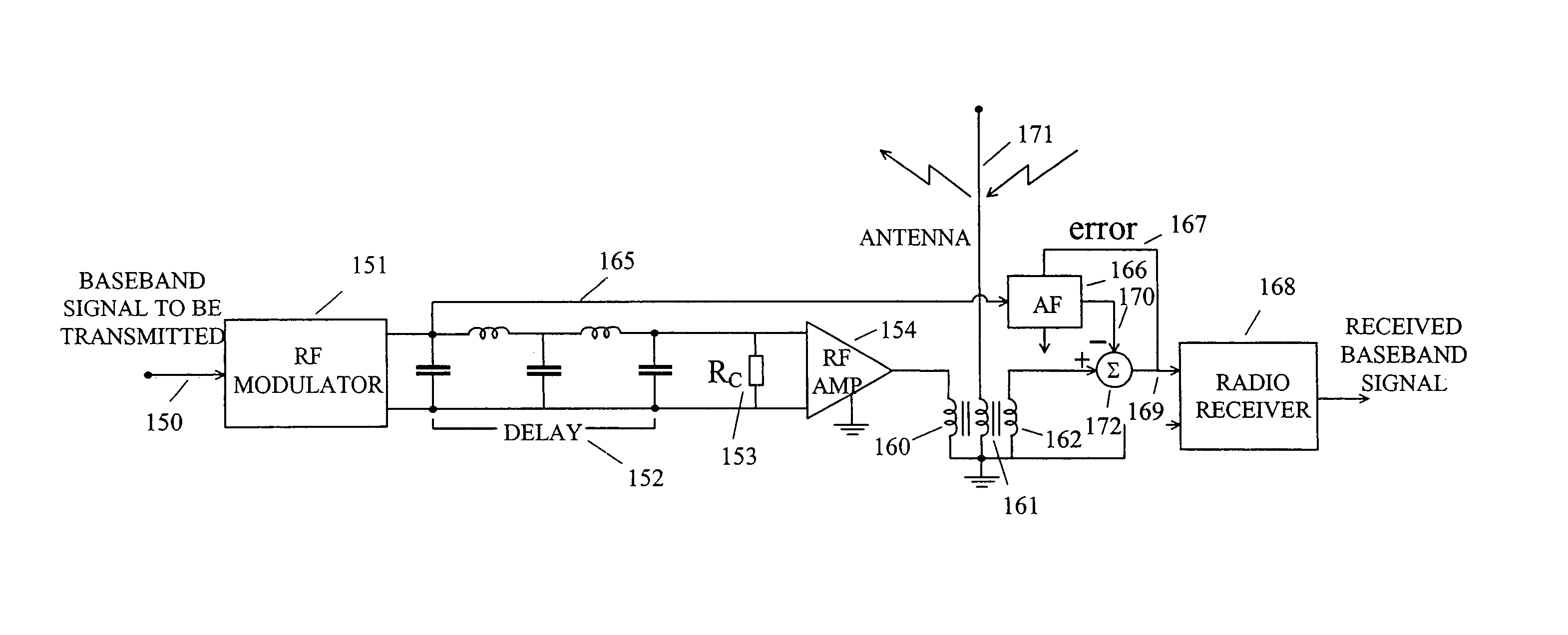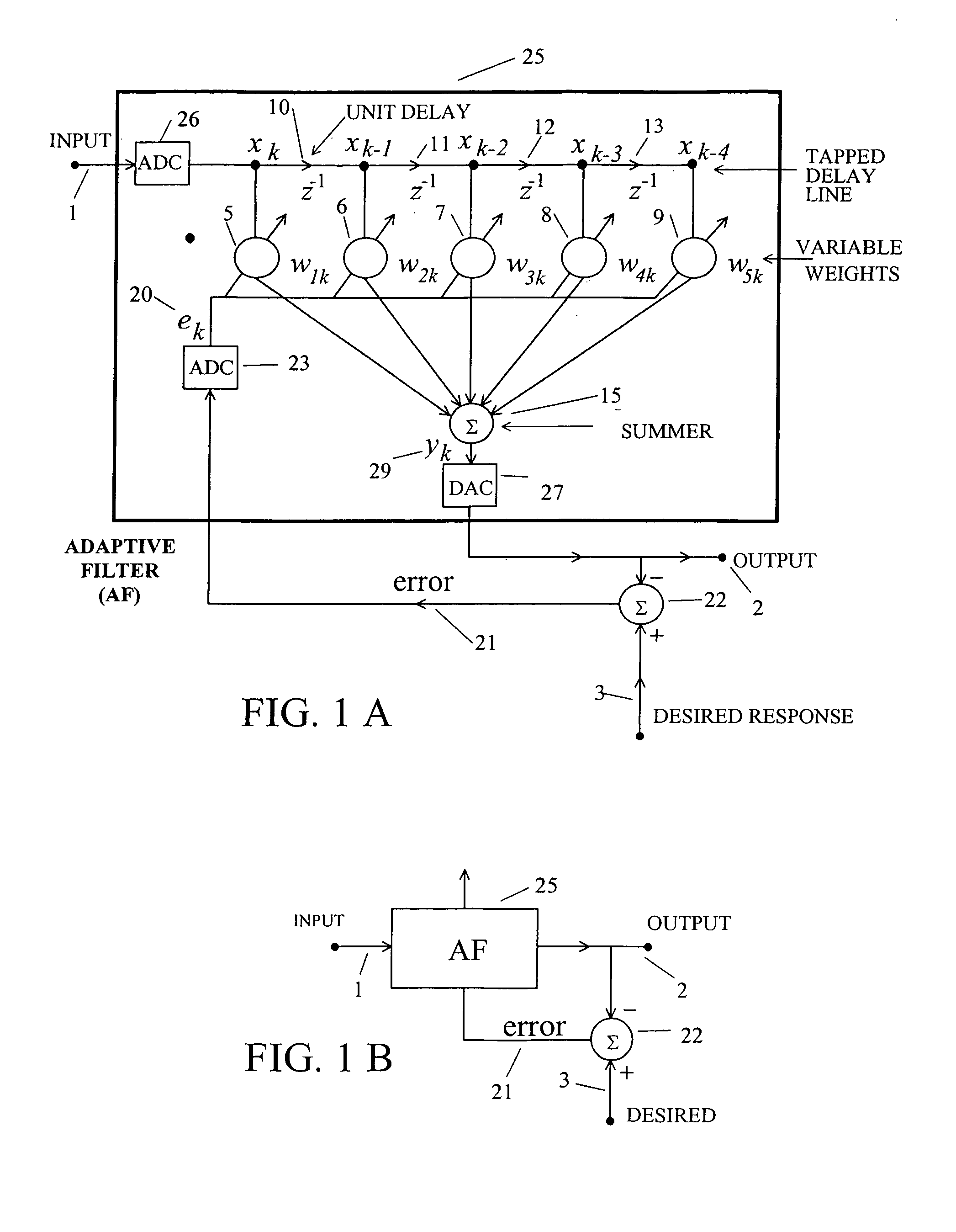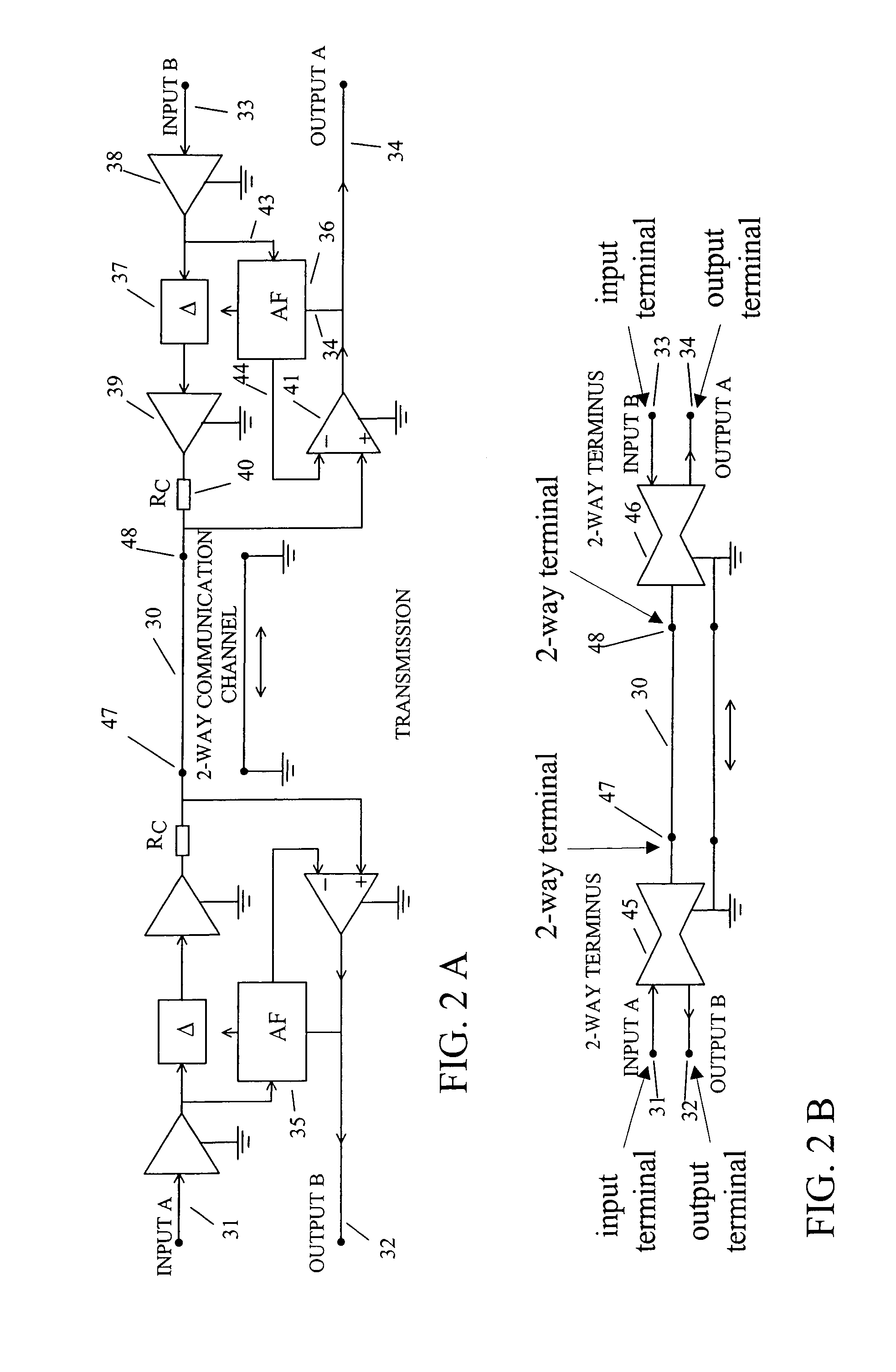Simultaneous two-way transmission of information signals in the same frequency band
a two-way transmission and information signal technology, applied in the field of telecommunications, can solve the problems of no automatic means for initial tuning or maintenance of balance over time, and achieve the effect of greatly increasing the capacity of channels with multiple users
- Summary
- Abstract
- Description
- Claims
- Application Information
AI Technical Summary
Benefits of technology
Problems solved by technology
Method used
Image
Examples
Embodiment Construction
[0028]FIGS. 1A and 1B show an adaptive filter of the type used in the present invention. This filter has an input signal 1, and output signal 2, and a special input called the “error”21. The impulse response of the filter is variable. This impulse response is controlled by a set of variable coefficients or “weights”, w1k, 5, w2, 6, . . . The values of the weights, in turn, are controlled by an adaptive algorithm whose purpose is to find the best combination of weight values so that the mean square of the error is minimized. The weights are shown as circles, and the arrows through them represent their variability. In FIG. 1B, a functional diagram of the adaptive filter is shown, with an input and an output like a conventional filter, but with the special error input shown as an arrow through the adaptive filter indicating the variability of the filter with the purpose of minimizing the error.
[0029]Referring now to FIG. 1A, the input is digitized by an analog-to-digital converter (ADC...
PUM
 Login to View More
Login to View More Abstract
Description
Claims
Application Information
 Login to View More
Login to View More - R&D
- Intellectual Property
- Life Sciences
- Materials
- Tech Scout
- Unparalleled Data Quality
- Higher Quality Content
- 60% Fewer Hallucinations
Browse by: Latest US Patents, China's latest patents, Technical Efficacy Thesaurus, Application Domain, Technology Topic, Popular Technical Reports.
© 2025 PatSnap. All rights reserved.Legal|Privacy policy|Modern Slavery Act Transparency Statement|Sitemap|About US| Contact US: help@patsnap.com



